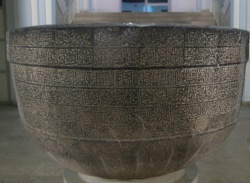Difference between revisions of "Cenobium"
(Created page with "thumb|250px| Cenobitic (or coenobitic) monasticism is a monastic tradition that stresses community life. Often in the West, the ...") |
m (Text replacement - "Category:Monasteries" to "Category:Buddhist Monasteries") |
||
| Line 6: | Line 6: | ||
[[Cenobitic]] [[monasticism]] [[exists]] in various [[religions]], though [[Buddhist]] and {{Wiki|Christian}} cenobitic monasticism are the most prominent. | [[Cenobitic]] [[monasticism]] [[exists]] in various [[religions]], though [[Buddhist]] and {{Wiki|Christian}} cenobitic monasticism are the most prominent. | ||
{{E}} | {{E}} | ||
| − | [[Category:Monasteries]] | + | [[Category:Buddhist Monasteries]] |
Revision as of 04:47, 30 September 2013
Cenobitic (or coenobitic) monasticism is a monastic tradition that stresses community life. Often in the West, the community belongs to a religious order and the life of the cenobitic monk is regulated by a religious rule, a collection of precepts. The older style of monasticism, to live as a hermit, is called eremitic; and a third form of monasticism, found primarily in the East, is the skete.
The English words "cenobite" and "cenobitic" are derived, via Latin, from the Greek words koinos (κοινός), "common", and bios (βίος), "life". The adjective can also be cenobiac (κοινοβιακός, koinobiakos). A group of monks living in community is often referred to as a "cenobium".
Cenobitic monasticism exists in various religions, though Buddhist and Christian cenobitic monasticism are the most prominent.
